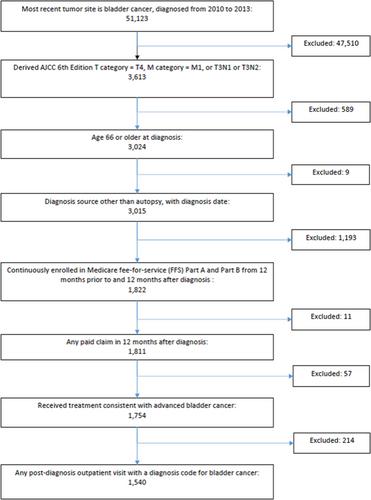Patterns of treatment in older patients with newly diagnosed advanced bladder cancer: A SEER dataset analysis
Abstract
Background
Bladder cancer is one of the top 10 cancers diagnosed in Americans with a median age of 73. This is the patient population that tends to be older with multiple medical conditions, and previously described variability in treatment in the earlier stages of the disease. This study aimed to evaluate the first-line therapeutic choices for older adults newly diagnosed with advanced bladder cancer. In addition, this work evaluated predictors of response as well as the role of events of functional importance in relation to treatment assignment.
Methods
A population-based cohort study was conducted using the SEER-Medicare database of patients with advanced stage bladder cancer not eligible for curative intent therapy between 2010 and 2013. Patient groups of interest were compared via univariate and multivariate associations. Additionally, a latent class analysis was applied to identify classes with similar features in reference to events of functional importance—events linked to the maintenance or improvement of physical function status.
Results
Within the sample, we noted that a minority of patients received a standard cisplatin-containing regimen (14.77%) and a majority did not receive any chemotherapy (59.69%). Most patients were over age 75. The adjusted odds ratio of no chemo versus cisplatin in patients aged 76 and older compared to patients 66–75 was 6.61 (4.79–9.13; p < 0.0001). We applied latent class analysis methods to the dataset, and three classes demonstrated very low and moderate levels of functional events in the 12 months prior to a person's first outpatient visit for advanced bladder cancer care.
Conclusions
Patients with new diagnosis of advanced bladder cancer largely do not receive the recommended first-line systemic therapy of cisplatin chemotherapy, and a significant majority does not receive any treatment. When evaluating the association between class assignment and predictors of chemotherapy use, such as comorbidity and age, patients with “low usage overall” were more likely to receive chemotherapy. Yet even patients who received chemotherapy had some events of functional importance.


 求助内容:
求助内容: 应助结果提醒方式:
应助结果提醒方式:


